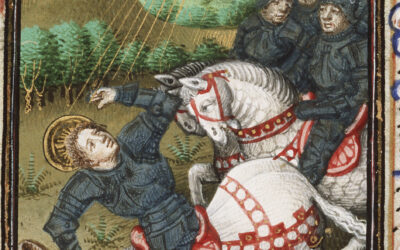Who Was Heinrich Zimmer?

Heinrich Zimmer (1890-1943) was a German Indologist, linguist, and historian of South Asian art who made significant contributions to the Western understanding of Hindu and Buddhist thought. Born in Greifswald, Germany, Zimmer studied Sanskrit and linguistics at the University of Berlin, where he was deeply influenced by the work of the famous Indologist Heinrich Lüders.
Throughout his career, Zimmer taught at various universities in Germany and the United States, including the University of Heidelberg, Balliol College, Oxford, and Columbia University. He was known for his engaging lecturing style and his ability to make complex philosophical and religious concepts accessible to a wide audience.
Zimmer’s work was characterized by a deep respect for the spiritual traditions of India and a desire to understand them on their own terms. Unlike many of his contemporaries, who viewed Indian thought through the lens of Western philosophy, Zimmer sought to engage with Hindu and Buddhist ideas as living traditions with their own unique insights and practices.
The Nature of Indian Philosophy
The Spiritual Quest
In his seminal work, Philosophies of India (1951), Zimmer explores the central themes and concepts of Indian thought, from the Vedic period to the modern era. He argues that Indian philosophy is fundamentally different from Western philosophy in its orientation and goals. While Western philosophy is primarily concerned with questions of epistemology and metaphysics, Indian philosophy is oriented towards the spiritual quest for liberation (moksha) from the cycle of birth and death.
For Zimmer, this spiritual quest is the unifying thread that runs through the diverse traditions of Indian thought. Whether in the Vedas, the Upanishads, or the teachings of the Buddha, the ultimate goal is to transcend the illusions of the ego and realize one’s identity with the ultimate reality (Brahman or nirvana). This realization is not merely an intellectual understanding, but a direct, transformative experience that fundamentally alters one’s perception of self and world.
The Role of Myth and Symbol
Zimmer sees myth and symbol as playing a central role in Indian philosophy and spirituality. Unlike in the West, where myths are often viewed as primitive or irrational, in India they are seen as powerful vehicles for conveying spiritual truths. Myths are not merely stories, but living realities that shape the consciousness of those who engage with them.
In his book, Myths and Symbols in Indian Art and Civilization (1946), Zimmer explores the rich symbolism of Indian art and its connection to spiritual philosophy. He argues that the gods and goddesses of the Hindu pantheon are not mere anthropomorphic deities, but archetypal forces that represent different aspects of the psyche and the cosmos. By engaging with these symbols through ritual, meditation, and contemplation, the spiritual seeker can awaken to the deeper dimensions of reality.
Hindu Thought and Practice 3.1 The Vedas and Upanishads
In Philosophies of India, Zimmer provides an in-depth analysis of the major schools of Hindu thought, beginning with the Vedas and Upanishads. He sees the Vedas, the oldest scriptures of Hinduism, as the foundational texts of Indian civilization, containing the seeds of all later philosophical and spiritual developments.
The Vedas are primarily concerned with the performance of rituals and sacrifices to maintain the cosmic order (rita). However, they also contain profound insights into the nature of reality, particularly in the later hymns of the Rig Veda known as the Upanishads. The Upanishads mark a shift from the external, ritualistic focus of the earlier Vedas to an inner, mystical quest for the true nature of the self (atman) and its relationship to the ultimate reality (Brahman).
The Bhagavad Gita
Zimmer also provides a detailed commentary on the Bhagavad Gita, one of the most important scriptures of Hinduism. The Gita, which is part of the larger epic Mahabharata, takes the form of a dialogue between the warrior Arjuna and his charioteer Krishna, who is an avatar of the god Vishnu.
For Zimmer, the Gita represents a synthesis of the major strands of Hindu thought, combining the devotional theism of bhakti yoga, the path of selfless action of karma yoga, and the wisdom of jnana yoga. The central message of the Gita is that one can attain liberation by performing one’s duties in a spirit of detachment and devotion to the divine.
Yoga and Tantra
Zimmer also explores the traditions of yoga and tantra, which he sees as practical methods for realizing the spiritual truths of Hindu philosophy. Yoga, which literally means “union,” refers to a set of physical, mental, and spiritual practices designed to still the mind and bring about a state of deep concentration and awareness.
Tantra, which Zimmer discusses in his book Artistic Form and Yoga in the Sacred Images of India (1926), is a more esoteric and controversial tradition that seeks to harness the power of desire and the senses for spiritual transformation. Tantra involves the use of mantras, visualizations, and ritual practices to awaken the kundalini energy that is believed to lie dormant at the base of the spine.
Buddhist Philosophy
The Life and Teachings of the Buddha
In Philosophies of India, Zimmer also provides an extensive analysis of Buddhist thought, beginning with the life and teachings of the historical Buddha, Siddhartha Gautama. He sees the Buddha as a great spiritual reformer who rejected the ritualism and dogma of the Brahmanical tradition in favor of a direct, experiential approach to liberation.
The core of the Buddha’s teaching is the Four Noble Truths: the truth of suffering, the truth of the cause of suffering, the truth of the cessation of suffering, and the truth of the path leading to the cessation of suffering. For the Buddha, suffering arises from our attachment to impermanent things and our mistaken belief in a fixed, permanent self. By following the Eightfold Path of right understanding, right thought, right speech, right action, right livelihood, right effort, right mindfulness, and right concentration, we can overcome these attachments and realize the ultimate reality of nirvana.
Mahayana Buddhism
Zimmer also explores the later developments of Buddhist thought, particularly the rise of Mahayana Buddhism. While the earlier teachings of the Buddha (known as the Theravada tradition) emphasized individual liberation, Mahayana Buddhism introduced the ideal of the bodhisattva, a being who seeks enlightenment not just for oneself but for the benefit of all sentient beings.
Mahayana Buddhism also developed a more elaborate metaphysical system, with the idea of emptiness (shunyata) as the ultimate nature of reality. According to this view, all phenomena are empty of inherent existence and arise in dependence on other factors. By realizing the emptiness of all things, including the self, one can transcend the illusions of duality and abide in the nondual wisdom of the Buddha.
Art and Aesthetics
The Spiritual Dimension of Indian Art
Throughout his work, Zimmer emphasized the close connection between art and spirituality in Indian culture. For Zimmer, Indian art was not merely decorative or representational, but a means of expressing and evoking spiritual states of consciousness.
In Myths and Symbols in Indian Art and Civilization, Zimmer explores the rich symbolism of Indian painting, sculpture, and architecture. He shows how the gods and goddesses of the Hindu pantheon, such as Shiva, Vishnu, and the Divine Mother, are depicted in various forms and poses that convey profound spiritual meanings. He also analyzes the symbolic significance of geometric patterns, such as the mandala and the yantra, which are used as aids for meditation and contemplation.
The Role of the Artist
For Zimmer, the Indian artist was not simply a craftsman or a creative individual, but a spiritual practitioner who sought to embody and transmit the truths of the tradition. The artist was expected to undergo a process of inner purification and transformation before creating a work of art, so that the artwork would be infused with spiritual energy and serve as a vehicle for divine revelation.
Zimmer sees this approach to art as fundamentally different from the Western notion of the artist as a singular genius or a self-expressive individual. In Indian art, the emphasis is not on novelty or originality, but on the faithful transmission of timeless archetypes and symbols. The artist is a humble servant of the tradition, seeking to disappear into the work rather than assert his or her own ego.
Legacy and Influence
Zimmer and Jung
Zimmer’s work had a profound influence on the Swiss psychologist Carl Jung, who wrote a foreword to Zimmer’s book The King and the Corpse (1948). Jung was deeply interested in the psychological and archetypal dimensions of myth and religion, and he saw in Zimmer’s work a kindred spirit.
Jung believed that the gods and goddesses of the Hindu pantheon represented archetypal forces within the collective unconscious, and that by engaging with these symbols, one could tap into the deep sources of psychological healing and transformation. He also saw parallels between the Eastern notion of liberation and his own concept of individuation, the process of becoming a fully realized individual.
Zimmer and Campbell
Zimmer’s ideas also had a significant impact on the work of Joseph Campbell, the renowned scholar of comparative mythology. Campbell, who was a student of Zimmer’s at Columbia University, credited Zimmer with introducing him to the richness and depth of Indian thought.
Campbell’s famous book The Hero with a Thousand Faces (1949) was heavily influenced by Zimmer’s insights into the archetypal nature of myth and the spiritual quest. Campbell saw the hero’s journey as a universal pattern that could be found in myths and stories across cultures, and he believed that by understanding this pattern, one could gain insight into the deeper dimensions of the human psyche.
Zimmer’s Relevance Today
Today, Zimmer’s work remains highly relevant for anyone seeking to understand the spiritual and philosophical traditions of India. His deep knowledge of Sanskrit and his ability to communicate complex ideas in a clear and engaging way make his writings accessible to a wide audience.
Moreover, Zimmer’s emphasis on the transformative power of myth and symbol resonates with the growing interest in spirituality and personal growth in the modern West. As more and more people seek alternatives to the materialism and individualism of contemporary culture, Zimmer’s vision of a spiritually oriented life rooted in timeless wisdom offers a compelling path forward.
At the same time, Zimmer’s approach to Indian thought is not without its critics. Some scholars have argued that his interpretations of Hindu and Buddhist concepts are overly influenced by Western categories and that he sometimes glosses over important historical and cultural differences.
Nevertheless, Zimmer’s work remains an important touchstone for anyone seeking to engage with the richness and depth of Indian spirituality. His legacy continues to inspire scholars, artists, and seekers around the world, reminding us of the enduring power of myth, symbol, and the quest for ultimate reality.
Zimmer’s Legacy and Influence
Heinrich Zimmer’s contributions to the study of Indian philosophy, art, and spirituality cannot be overstated. Through his writings and lectures, he opened up a vast treasure trove of wisdom and insight that had previously been inaccessible to most Western audiences.
Zimmer’s approach to Indian thought was characterized by a deep respect for the integrity and sophistication of the traditions he studied. Rather than imposing Western categories or assumptions onto Hindu and Buddhist concepts, he sought to understand them on their own terms, as living realities with their own unique perspectives and practices.
At the same time, Zimmer was not afraid to draw bold comparisons and connections between Indian and Western thought. He saw in the spiritual quest for liberation a universal human impulse that transcended cultural and historical boundaries. He believed that by engaging with the myths, symbols, and practices of Indian tradition, one could gain profound insights into the nature of the self, the world, and ultimate reality.
Zimmer’s work also had a significant impact on the fields of psychology, comparative religion, and the arts. His insights into the archetypal dimensions of myth and symbol influenced a generation of thinkers, from Carl Jung to Joseph Campbell to Mircea Eliade. His appreciation for the spiritual dimensions of Indian art and aesthetics helped to broaden Western understanding of the role of creativity in human life.
Today, as the world becomes increasingly interconnected and the boundaries between cultures and traditions become more porous, Zimmer’s vision of a global spirituality rooted in the perennial wisdom of the ages is more relevant than ever. His work reminds us that beneath the surface differences of language, culture, and belief, there is a common human quest for meaning, purpose, and transcendence.
As we grapple with the challenges of the 21st century – from environmental destruction to social injustice to the crisis of meaning in a post-religious world – Zimmer’s insights offer a pathway forward. By reconnecting with the deep sources of wisdom and compassion that lie at the heart of the world’s spiritual traditions, we can find the resources we need to heal ourselves and the planet.
Of course, this is not an easy task. It requires a willingness to step outside of our familiar frames of reference, to question our assumptions and biases, and to open ourselves to new ways of seeing and being. It requires a commitment to inner transformation as well as outer action, a recognition that the personal and the political, the spiritual and the social, are ultimately inseparable.
But as Zimmer’s life and work remind us, this is the great adventure of being human. By embracing the mystery and complexity of existence, by seeking to align ourselves with the deeper currents of life and consciousness, we can discover a sense of meaning and purpose that transcends the limitations of our individual selves.
In the end, perhaps this is the greatest gift that Heinrich Zimmer has left us – an invitation to embark on the spiritual quest, to explore the uncharted territories of the soul, and to discover for ourselves the timeless truths that lie at the heart of the human experience. May his legacy continue to inspire and guide us as we navigate the challenges and opportunities of our time.
Read More Depth Psychology Articles:
Taproot Therapy Collective Podcast
Anthropology
Bibliography:
- Campbell, J. (1949). The Hero with a Thousand Faces. New York: Pantheon Books.
- Chapple, C. (1984). Introduction. In H. Zimmer, The Art of Indian Asia: Its Mythology and Transformations (pp. xiii-xxxviii). Princeton, NJ: Princeton University Press.
- Eliade, M. (1958). Yoga: Immortality and Freedom. New York: Pantheon Books.
- Jung, C. G. (1948). Foreword. In H. Zimmer, The King and the Corpse: Tales of the Soul’s Conquest of Evil (pp. xi-xxiii). New York: Pantheon Books.
- Lawlor, R. (1991). Voices of the First Day: Awakening in the Aboriginal Dreamtime. Rochester, VT: Inner Traditions.
- Moore, R., & Gillette, D. (1990). King, Warrior, Magician, Lover: Rediscovering the Archetypes of the Mature Masculine. San Francisco: HarperSanFrancisco.
- Nagappa, G. (2011). Hinduism and the West: The Thought of Heinrich Zimmer. In A. Malinar (Ed.), Hinduism and the West: The Thought of Heinrich Zimmer (pp. 1-14). New Delhi: Orient Blackswan.
- Organ, T. W. (1975). Zimmer on Myths and Symbols in Indian Art and Civilization. Philosophy East and West, 25(2), 191-207.
- Stein, M. (1998). Jung’s Map of the Soul: An Introduction. Chicago: Open Court.
- Zimmer, H. (1926). Artistic Form and Yoga in the Sacred Images of India. Princeton, NJ: Princeton University Press.
- Zimmer, H. (1946). Myths and Symbols in Indian Art and Civilization. New York: Pantheon Books.
- Zimmer, H. (1948). The King and the Corpse: Tales of the Soul’s Conquest of Evil. New York: Pantheon Books.
- Zimmer, H. (1951). Philosophies of India. New York: Pantheon Books.
- Zimmer, H. (1954). The Art of Indian Asia: Its Mythology and Transformations. New York: Pantheon Books.
- Zimmer, H. (1956). Heinrich Zimmer: Coming into His Own. Princeton, NJ: Princeton University Press.




0 Comments